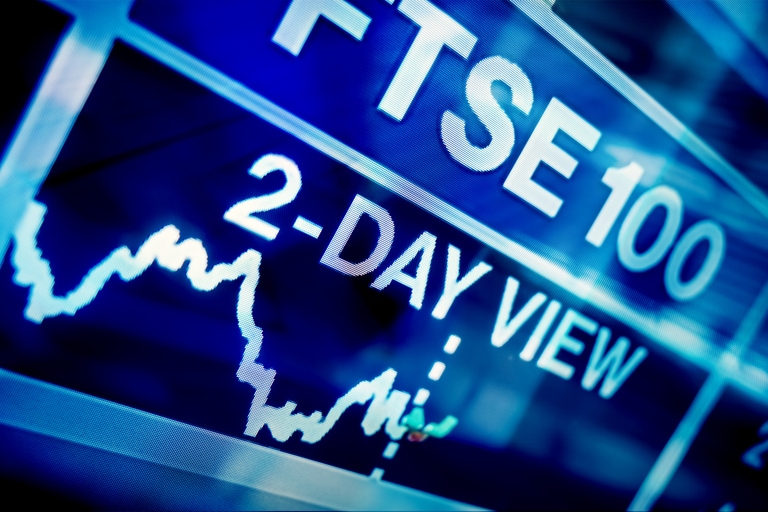Having seen European and US markets post their second successive day of gains yesterday, on optimism that the recent turbulence in the banking sector has been managed, market attention appears to be settling back towards inflation, as well as the outlook for further rate hikes from central banks.
The rate outlook has shifted markedly in the past couple of weeks from how many more we are likely to see, to how many more can be sustained before something else breaks, in light of recent events.
The next 36 hours will see the latest UK inflation numbers for February, as well as key interest rate decisions from the Federal Reserve, Swiss National Bank, and the Bank of England.
Starting with the UK CPI numbers for February, the decline in energy prices has offered some respite to hard-pressed consumers in recent months, most notably at the petrol pumps.
The onset of spring and warmer weather could also offer some relief, however, at the last set of CPI numbers in January, headline inflation fell to 10.1%, while core prices also fell back from 6.3% to 5.8%.
While this is welcome it is little comfort given that food prices have continued to rise sharply, and remain eye-wateringly high, rising 16.7% in January.
One other thing that we also know about inflation in the UK is that it goes up quickly and comes down slowly, and with wage inflation also rising it is likely to remain sticky.
It’s also important to remember that it is still 5 times higher than the Bank of England’s 2% target, even if we are seeing some predictions that it could fall back to 2% by the end of this year. Expectations are for headline inflation to fall to 9.9% and core prices slip to 5.7%, but even if we do see a weaker than expected reading, a base rate of 4% barely seems adequate to act as a drag on this measure of price rises and will still increase the pressure on the Bank of England to hike by 25bps at the very least tomorrow.
To hike or not to hike, that is the question that will dominate risk sentiment today when the Fed gets set to make a decision on rates in the shadow of a banking crisis that does appear to be all intents and purposes in the rear-view mirror.
Before recent events around the collapse of Silicon Valley Bank, Signature Bank and latterly the problems around First Republic Bank and the rescue packages that have followed, the calculus around this week’s Federal Reserve rate decision was a simple one, namely whether to raise rates by 25bps or go by 50bps.
Even without the intervention of the recent crisis in smaller US banks, 50bps wasn’t really a viable option, but the sharp selloff in US banks, and the ensuing volatility of the last few days has changed the equation amongst some investors, with some arguing for a pause, as well in a minority of cases for a rate cut.
At this point a rate cut is a ridiculous notion and would send the completely the wrong message at a time when optics are everything. If the Fed does have concerns about some parts of the US banking sector, why weren’t they apparent 3 weeks ago when they were pushing the case for keeping a 50bps rate hike on the table? Ultimately a rate cut could prompt further volatility, prompting a market freak out in that the situation could be far worse than realised.
Even a pause has the potential to be unsettling given Powell’s recent comments to US lawmakers which showed the Fed is becoming increasingly concerned about rising prices. He might be able to make it fly if he made it clear that hikes would resume once the picture becomes clearer, and that we aren’t about to feel any aftershocks, but it might be a tough sell. Even with the choppiness caused by recent events the view on sticky prices is unlikely to have changed much, given the strength of some of the recent economic numbers.
The biggest challenge will be whether or how much the FOMC sees fit to raise its dot plot guidance when it comes to the number of rate hikes to expect over the rest of this year in light of recent economic data. How Powell manages market expectations at his press conference, especially with respect to how events have affected today’s decision will be as equally important as the decision itself.
A rate hike of 25bps still seems the most probable outcome, with the bigger risk being that he overcompensates after the market’s buoyant reaction to his February press conference, and negative reaction to his testimony to US lawmakers.
Powell needs to steer a middle ground. Minneapolis Fed President Neel Kashkari has always maintained a terminal rate of 5.4% is his base case and market estimates did briefly move up to those levels earlier this month, although we have since fallen from those peaks.
Inflation is now starting to fall back, even as core prices remain sticky. The recent volatility has seen markets start to price in rate cuts later this year, although this could change if things continue to calm down.
If inflation remains sticky, and things settle down then the rate cuts that are starting to get priced in for this year could well get priced out again just as quickly. Let’s not forget the Fed is still nowhere near its 2% target, and that’s something the markets haven’t yet come to terms with.
EUR/USD – has continued to edge higher, pushing above last week’s highs and towards 1.0800. A move through 1.0800 could retarget the recent range highs at 1.1030. Still have support at recent lows at 1.0520.
GBP/USD – failed just shy of 1.2300 yesterday and feels vulnerable to a slide back towards 1.2000 with a failure to push above this key resistance. Still has solid support at 1.1800 with a break targeting the 1.1640 area.
EUR/GBP – strong rebound off trend line support from the lows last August yesterday at 0.8720 and has pushed back above the 0.8820 area. Further gains could see a move towards 0.8930. Support now at 0.8780.
USD/JPY – seen a solid rebound off cloud support this week, now currently at 131.05, with the main resistance still up near the 200-day SMA at 135.90. A break of 130.00 targets the 128.00 area.
CMC Markets erbjuder sin tjänst som ”execution only”. Detta material (antingen uttryckt eller inte) är endast för allmän information och tar inte hänsyn till dina personliga omständigheter eller mål. Ingenting i detta material är (eller bör anses vara) finansiella, investeringar eller andra råd som beroende bör läggas på. Inget yttrande i materialet utgör en rekommendation från CMC Markets eller författaren om en viss investering, säkerhet, transaktion eller investeringsstrategi. Detta innehåll har inte skapats i enlighet med de regler som finns för oberoende investeringsrådgivning. Även om vi inte uttryckligen hindras från att handla innan vi har tillhandhållit detta innehåll försöker vi inte dra nytta av det innan det sprids.






